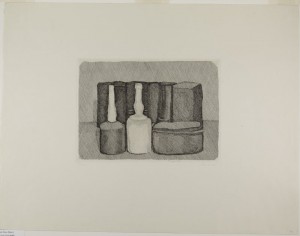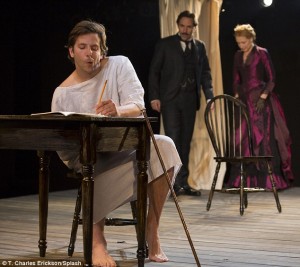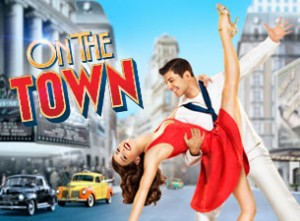I’ve been looking through Reagan: A Life in Letters, a book whose publication will no doubt startle a lot of people unaware that Ronald Reagan was the most prolific presidential correspondent of modern times. I’m not talking about the kind of “letter” produced in batch lots by a team of secretaries equipped with autopens, either. Of the 1,100 letters in this 934-page book, some 80% were written by hand, another 15% dictated. The editors had “over 5,000 genuine Reagan letters” to choose from, and they estimate that another 5,000 or so have yet to surface.
Put aside for a moment your opinion of Reagan (either way) and think instead about the implications of those numbers. Speaking as a biographer, I can assure you that this is an extraordinarily large number of letters to have been written by any public figure, much less one who wasn’t a professional writer–though Reagan, as it happens, spent a number of years writing his own speeches, radio commentaries, and syndicated columns, and would also have been perfectly capable of writing his own memoirs without assistance had he been so inclined. Off the top of my head, I can’t think of any other 20th-century president who left behind so large a body of informal writing, and few who wrote as much in any medium. Theodore Roosevelt, probably Nixon, possibly Calvin Coolidge (who was, believe it or not, the best by-his-own-hand presidential prose stylist in modern times), and…who else? Nobody comes to mind….
Read the whole thing here.



 I was especially interested in a 1954 etching by Giorgio Morandi that I’d only seen reproduced in catalogues. You can’t fully appreciate the texture and depth of a great etching until you see it “in the flesh,” so to speak, and this one ranks among Morandi’s finest. Having once
I was especially interested in a 1954 etching by Giorgio Morandi that I’d only seen reproduced in catalogues. You can’t fully appreciate the texture and depth of a great etching until you see it “in the flesh,” so to speak, and this one ranks among Morandi’s finest. Having once  One of the reasons why I wanted to see Master Prints: Dürer to Matisse is that Mrs. T and I also collect prints, albeit on a far more modest scale. The day after I flew back to New York, I picked up
One of the reasons why I wanted to see Master Prints: Dürer to Matisse is that Mrs. T and I also collect prints, albeit on a far more modest scale. The day after I flew back to New York, I picked up  In 2004, a year after I started buying works on paper, I wrote an
In 2004, a year after I started buying works on paper, I wrote an 
 “The Elephant Man” is a fictionalized recounting of the life of Joseph Merrick (Mr. Cooper), who suffered from a rare condition that caused his skin to resemble the hide of an elephant and distorted his body in other horrifically unsightly ways. Spurned by his family, he spent four years in a workhouse, then submitted to being put on exhibition by crooked showmen. He was rescued by Frederick Treves (Alessandro Nivola), a surgeon who took him into the London Hospital and looked after him for the rest of his brief life. When Dr. Treves made a public appeal to raise funds for his care, the young man became a cause célèbre and drew the attention of England’s high society, for even though he was grotesquely disfigured, his mind functioned normally and he was emotionally sensitive.
“The Elephant Man” is a fictionalized recounting of the life of Joseph Merrick (Mr. Cooper), who suffered from a rare condition that caused his skin to resemble the hide of an elephant and distorted his body in other horrifically unsightly ways. Spurned by his family, he spent four years in a workhouse, then submitted to being put on exhibition by crooked showmen. He was rescued by Frederick Treves (Alessandro Nivola), a surgeon who took him into the London Hospital and looked after him for the rest of his brief life. When Dr. Treves made a public appeal to raise funds for his care, the young man became a cause célèbre and drew the attention of England’s high society, for even though he was grotesquely disfigured, his mind functioned normally and he was emotionally sensitive. •
•